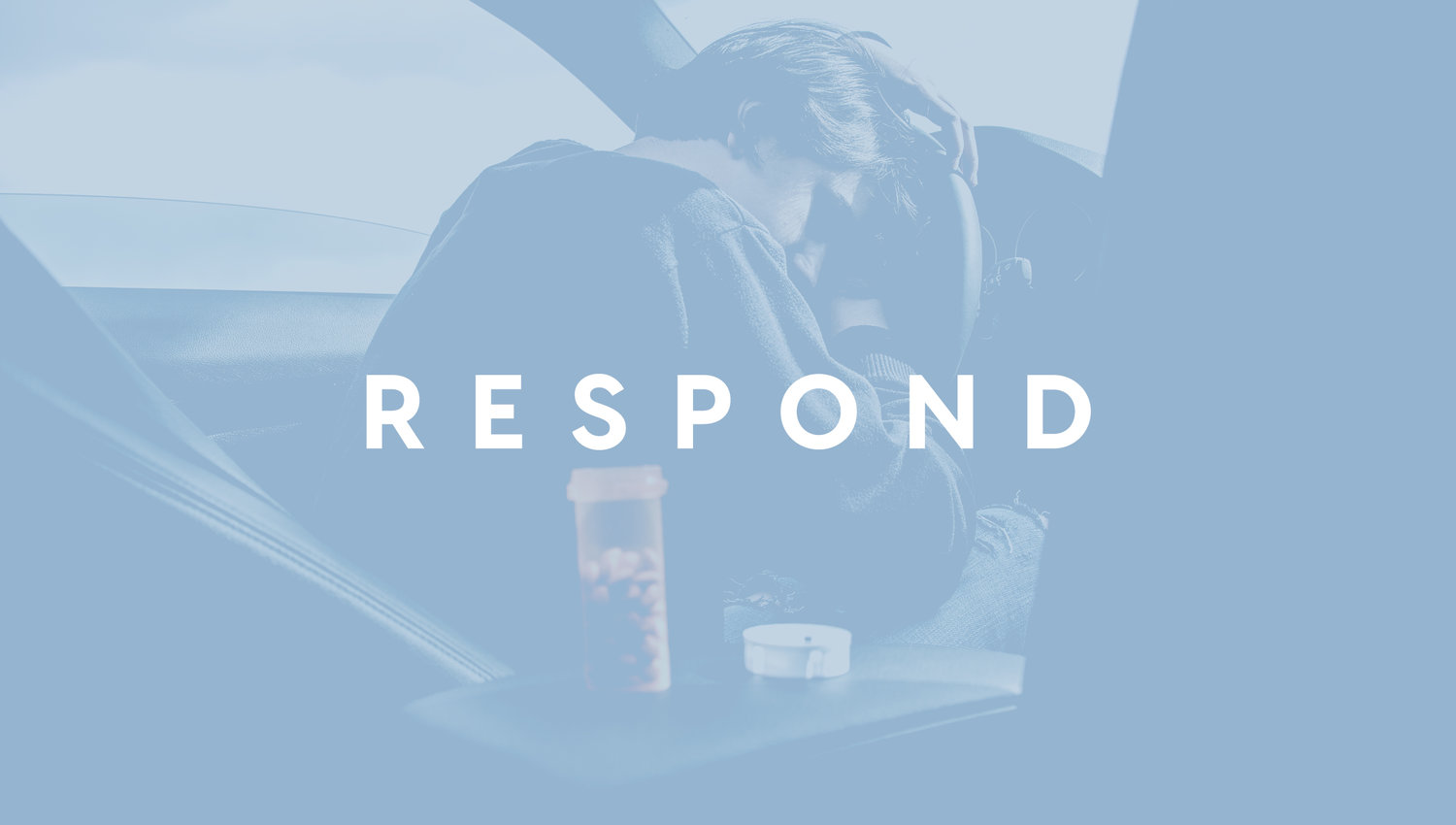Overcome Opioids - Understand
What are opioids?
Opioids (oh-pee-oyds) are a class of drugs that include illegal drugs like heroin, as well as prescription pain medications including oxycodone (Oxycontin), hydrocodone (Vicodin), codeine, morphine, and many others. Fentanyl is an opioid pain medication that can be prescribed by a medical provider, but is also illegally produced and sold on the street. Opioids are drugs that act on nerve cells in the brain and body and can relieve pain, but when taken in larger amounts can also create euphoria (or a “high”) and can put someone at risk for overdose and death.
Prescription Opioids:
Medical providers may prescribe opioids to relieve moderate to severe pain. Opioid pain relievers are usually safe when taken for short periods of time and as prescribed by a medical professional (doctor, dentist, etc). Even when taken as prescribed, opioids have risk for side effects. Common side effects include: sleepiness, dizziness, confusion, itching, and constipation. With continued use, hormone levels are often affected and men may experience low levels of testosterone that can affect sex drive and the ability to have sex. Women may experience irregular menstrual cycles. Additionally, people who take opioids regularly are likely to develop tolerance (higher doses of the medication are needed to provide the same level of pain relief) and withdrawal symptoms (flu-like symptoms when someone stops or misses a dose of the medication).
Opioid pain medications can be misused.
When taken at higher doses than prescribed, more frequently than prescribed, or if taking someone else’s medication, they can produce euphoria (positive sensations) in addition to pain relief. Additionally, when opioids are taken in large amounts, they can cause someone to stop breathing and even die. When opioids are mixed with other “downers” like alcohol or benzodiazepines (medicines that are sometimes used for anxiety treatment; for example Xanax, Klonipin, Valium), risk for overdose and death goes up even more.
What is an opioid overdose??
High doses of opioids (prescription opioids or illicit opioids like heroin) cause the breathing centers of the brain to shut down, often resulting in death.
At-Risk Populations for Overdose:
-
 People with lung, kidney, or liver problems
People with lung, kidney, or liver problems -
 People 65 years or older
People 65 years or older -
 Pregnant women
Pregnant women -
 People who have had a previous overdose
People who have had a previous overdose -
 People who are also taking benzodiazepines, certain sleep medications, muscle relaxants, and/or alcohol (all of these also slow down breathing)
People who are also taking benzodiazepines, certain sleep medications, muscle relaxants, and/or alcohol (all of these also slow down breathing) -
 People who have had a period of not using opioids (for example after incarceration or detox) and go back to taking the same dose of opioids they used prior
People who have had a period of not using opioids (for example after incarceration or detox) and go back to taking the same dose of opioids they used prior
Symptoms of Opioid Use Disorder
Opioid use disorder is the medical term for opioid addiction. Scientists do not fully understand why some people who are exposed to opioids go on to develop opioid use disorder while others do not.
It is understood that all types of substance use disorders have a genetic component and people with personal or family histories of substance use disorders seem to be at higher risk. It is also known that people who have experienced trauma have higher rates of substance use disorders.
Opioid use disorder may be diagnosed when someone has two or more of the following symptoms:
-
 Opioids are taken in larger amounts or for a longer period of time than was intended/div>
Opioids are taken in larger amounts or for a longer period of time than was intended/div> -
 Desire or unsuccessful attempts to cut down or control opioid use
Desire or unsuccessful attempts to cut down or control opioid use -
 A lot of time is spent trying to get opioids, use opioids, or recover from the effects of opioids
A lot of time is spent trying to get opioids, use opioids, or recover from the effects of opioids -
 Cravings or strong urges to use opioids
Cravings or strong urges to use opioids -
 Continued use of opioids that cause failure to fulfill duties at work, school or home
Continued use of opioids that cause failure to fulfill duties at work, school or home -
 Continued use despite having social or relationship problems that were caused or worsened by opioids and their effects
Continued use despite having social or relationship problems that were caused or worsened by opioids and their effects -
 Continued use despite having physical or emotional problems that are likely to be caused or worsened by opioids
Continued use despite having physical or emotional problems that are likely to be caused or worsened by opioids -
 Important social, occupational, or recreational activities are given up or reduced because of opioid use.
Important social, occupational, or recreational activities are given up or reduced because of opioid use. -
 Recurrent opioid use in situations in which it is physically hazardous.
Recurrent opioid use in situations in which it is physically hazardous. -
 Tolerance* (needing more of the drug to get the same effect or the same dose of the drug not causing the same level of response)
Tolerance* (needing more of the drug to get the same effect or the same dose of the drug not causing the same level of response) -
 Withdrawal* (feeling sick when dose is missed or continuing to use to avoid feeling sick)
Withdrawal* (feeling sick when dose is missed or continuing to use to avoid feeling sick)
*If tolerance and withdrawal are the only two symptoms and the individual is taking opioids as prescribed by a medical professional, the individual does not have opioid use disorder, as these are normal responses of the body to regular opioid use. If the individual has these symptoms plus additional symptoms, he/she may have an opioid use disorder.
Opioid use disorder is a chronic condition. Like many chronic conditions, people often need life-long support to be able to effectively manage the condition.




